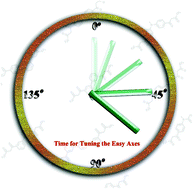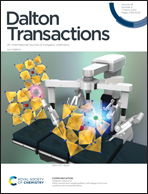Crystallization and single molecule magnetic behavior of quadruple-stranded helicates: tuning the anisotropic axes†
Abstract
It has been successfully proven that the bis-β-diketone ligands with proper lengths and flexibility are essential for the construction of multiple-stranded helicates, where two Dy3+ centers in subtly different environments allow the tuning of the anisotropic axes. Based on our previous work, we have designed a flexible bis-β-diketone ligand BTT (BTT = 3,3′′-bis(4,4,4-trifluoro-1,3-dioxobutyl)-m-terphenyl), which is successfully utilized to construct quadruple-stranded helicates with the formula of [C6H16N]2[Ln2(BTT)4]·2CH2Cl2·4CH3OH [Ln = Ce (1), Dy (2)]. Structural analysis indicates that they crystallize in the tetragonal space group P4/n, and each Ln3+ center is chelated by four diketonate moieties from four ligands, giving rise to a dinuclear quadruple-stranded helicate. Magnetic measurements show that 2 displays single molecular magnet behavior under an applied DC field of 2000 Oe. Further investigations indicate that the anisotropic axes of the Dy3+ centers can be tuned depending on the bis-β-diketonate ligands used to assemble the Dy helicates.



 Please wait while we load your content...
Please wait while we load your content...